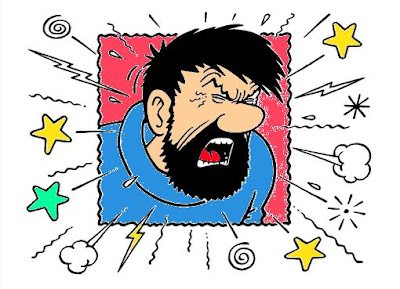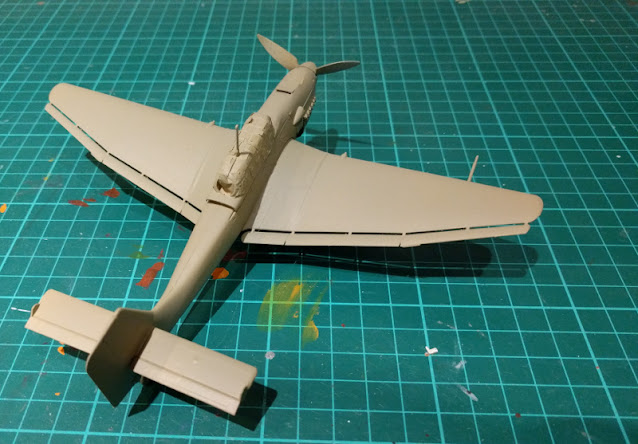Fighting the silvering
Being the lazy pig I am I applied the glossy varnish (interestingly Humbrol's bottle says Matt Cote, but it has always been very glossy to me, but after a new search I found out I just didn't know how to use it properly) only where I was going to insert a decal and nowhere else. Yes, I was going to apply decals despite my neverending complaints about them.
So: I varnished mostly corresponding areas of the bottom and top surfaces of the wings. Then I varnished the rear airframe from the back of the canopy up to the tail wing. Finally, just in case I was going to use that bit that made me think it was the unit's individual funny thing. While writing this subsection the fact was that P("any extra decals") = 45%.
Decals
Spoiler: fml
Let's get that out of the way, everyone was expecting it anyway. I was applying S7+AT as this plane's markings to the airframe. The first side went ok. The second S7 turned into some purple profiteering jellyfish and I couldn't undo the first one anymore.
There I was, asking myself again: why in the Empire do I always give these pieces of crap more and more last chances? Either I was an idiot or an incurable optimist.
To business
Under the wings I applied the largest of the three Balkenkreuz, no issues there. I wasn't mad enough to use the slices on the dive brakes. The middle-sized crosses went on top of the wings and the smallest ones behind the tail band. All good there.
Then I started pondering which markings to use, if any. Despite my usual fears nagging on the background I decided to go with a set. From one suggested variant I took substring "AT" and used it at the end. To go with that I took the other substring "S7" (no, I was not going to cut those in two and apply them character by character) and the first one behaved as hoped. But as I already spoiled the surprise, the second '7' turned into boiled spaghetti and I just swore inside my own head.
Despite all this stupidity I attached the silly shields to the nose of the plane not giving a flying hoot if it was like this in the history books. As a personal comment I thought that the shield was ridiculously oversized compared to the rest of the plane.
Dullcoating
As the interwebs had re-educated me, I shook and mixed the Humbol dullcoat like a maniac with maracas, and spread it around the plane. That crap took way, way longer than Vallejo's matt varnish to dry, but I wasn't in a rush. I left it to cure over the rest of the evening and night.
The next morning this is how the Afrika's conqueror looked like. Maybe I'm just used to the sharp-contrast nationality and whatnot markings, but somehow I got the feeling that maybe I should've gone with a lighter touch with the paints. But then again, they didn't look bad, just quite different.


















































